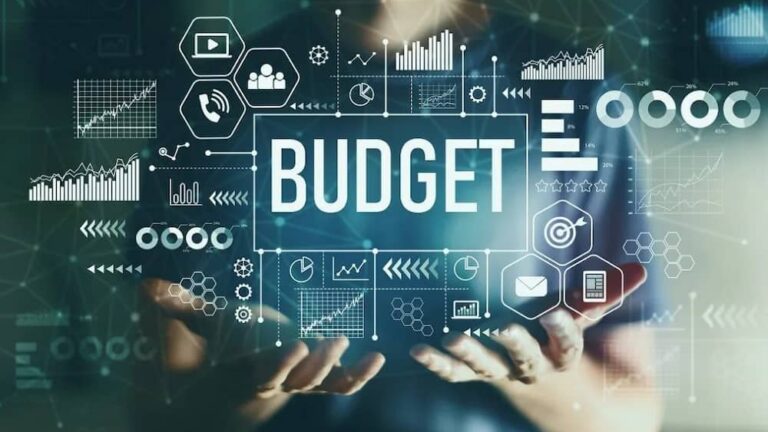A flexible budget is one that can be altered in response to modifications made to the underlying assumptions used to develop it during management’s planning process. In contrast, a static budget stays the same even if there are significant deviations from the planning assumptions.
The ability to adapt is a flexible budget’s biggest advantage over a static one. Real change occurs constantly in the real world. A company is better prepared for the challenges of the market with a flexible budget that can handle this reality.
For more specific information, keep reading.
What is a Static Budget?
To project business expenses for a given accounting period, static budgets are projection tools. There will be differences between the budgeted amount and the actual spending amount, particularly if you deal with fluctuating costs of raw materials or the cost of goods sold. Static budget variance describes these differences.
Accurate financial reporting necessitates combining the static budget variances with the initial static budget when you reach the end of a production cycle and must account for the actual costs. A static budget can be thought of as a projection budget to keep things straightforward.
All of your expenses—fixed costs, variable costs, etc.—will be estimated. Throughout the accounting period, you’ll keep track of the actual figures, including:
- Actual output
- Actual sales volume
- Actual revenue
The actual costs and outcomes can be compared to the estimated budgeted amounts. With the help of that data, you can adjust your budget forecasting for the following period in order to reduce any unfavorable variances (i.e., instances where you spent more money than anticipated) for the budget period.
Even if there are significant deviations from the presumptive circumstances during planning, static budgets don’t change.
Benefits of a Static Budget
- Easy to implement and follow since they do not require constant updating
- Offers great insight into a company’s costs and profits, when you perform a variance analysis
- Built-in cost controls and accountability since there’s no “wiggle room” built into the budget
- Great for a master budget
- Simplifies taxes and makes it easier to estimate taxes owed
The Static Budget Approach Minuses
Based on your best educated guess at what actual future activity will look like, a static budget is created in advance. A year in advance, static budgets are typically planned and divided into more manageable reporting intervals like months and quarters.
Lack of actual data to base a budget on is a major drawback for new businesses. If actual data significantly deviates from the static budget, there is no way to adjust the budget or to assess whether the expenses incurred to generate the revenue were properly controlled. A forecast must be made in its place. The forecast is a brand-new report that projects activity for the remaining portion of the reporting period and contrasts it with the actuals and the static budget.
Why Do Static Budgets Work?
The variance analysis is the most compelling justification for using a static budget. You can find out from the variance analysis, in terms of both percentage and dollars, how much your budget exceeds or falls short of the initial projections. When you know you have a comparison between what was anticipated and what actually happened, it might be simpler to plan for future years, even for new businesses. If the variance percentages change in the following years, you can increase or decrease the budget. In the absence of extraordinary circumstances, it is best to use static budgets when you can predict revenues and costs with a certain level of certainty.
Read about: What Is A Static Budget?

What is a Flexible Budget?
When combined with a static budget, a flexible budget makes an excellent tool for performance evaluation. Essentially, it is a method for fully accounting for the cost variance of the static budget. By providing performance rewards to your staff, as long as they are directly related to adhering to the static budget, you can reduce the costs associated with your flexible budget.
Flexible spending plans are a tool for business cycle analysis. They cannot be produced before the end of the business cycle. You can make adjustments for the static budget forecasts for the following cycle by taking a look at the flexible budget at the end of the cycle. In this manner, the budget keeps pace with the fluctuating landscape of operating expenses. The end-of-period actual accounting of expenses is your flexible budget. It can be compared to the static budget for comparison purposes.
In contrast to a static budget, which uses fixed amounts, a flex budget uses percentages of income or expenditures. With this strategy, you can easily make adjustments to the budgeted costs that are directly related to your actual revenue.
The static budget will be incorrect, for instance, if you build it based on 1,000 units but only produce or sell 600. You can take that change into account with the flexible budget, accurately reflecting the circumstances for 600 units. It also works the other way around; if you find that you need to produce 1,400 units, you can use the flexible budget to increase your overall cost.
Let’s examine a case study using Blue Company.
The $10 million revenue and $4 million cost of goods sold are the budgeted amounts for Blue Company. Only $1,000,000 of that $4,000,000 budget is fixed. The final $3 million is based on revenue but is subject to change. Consequently, 30% of revenues are the variable portion of the costs of goods sold.
As a result, the variable portion of costs of goods sold increases from $3 million to $4.5 million if efforts reach $15 million.
The variable portion decreases from $3 million to $2.4 million if efforts are scaled back to $8 million.
Benefits of a Flexible Budget
- enables you to adapt to changing circumstances and market conditions, such as changes in business volume and market fluctuations, with ease.
- Resource allocation is less rigid
- Provides a more accurate reflection of your current financial state
- Makes it easier for your organization to mitigate risk while pursuing new opportunities
- Helps to account for unexpected expenses
- Better cost controls
The Flexible Budget Approach Minuses
Because you can alter the budget in the middle of the reporting period, flexible budgeting is a more sophisticated technique. To frequently adjust the budget, though, you might not have the time, the skills, or the desire. Additionally, you might not know to plan for unanticipated consequences from an unanticipated change in volume. The costs that are fixed and variable, as well as how changes in revenue affect expenses, must be known in advance in order to create a flexible budget.
Why Do Flexible Budgets Work?
The flexible budget gives you more control because it adjusts according to volume. A percentage-of-volume cap on some flexible expenses can help new businesses keep a tight rein on costs.
Flexible budgets provide a real-time view of a business’s expenses and income in the event that a new venture deviates significantly from the original plan. A savvy business owner might not have the time to bother creating a forecast for the static budget. The forecast is completed in one step thanks to the flexible budget.
Read about What Is A Flexible Budget?
When to Use a Flexible Or Static Budget
What kind of budget should you use when, then? Both budget types ought to be utilized by the majority of businesses. Only when your business is able to adhere strictly to the initial static budget during business cycles should this strategy be deviated from. Both the static and flexible budget’s information would be identical in this case.
Businesses with a higher proportion of variable costs, where expenses are mainly related to activity levels, should use flexible budgets.
Businesses can easily see more variances with a flexible budget. You would put money aside during the months when your income was higher in preparation for the months when it was lower.
Inaccurately Monitoring Your Budget Consequences
It may be challenging for businesses to report their actual earnings if they do not effectively track changing expenses in comparison to their initial static budget. This might have unfavorable legal ramifications. Companies have a stake in giving shareholders accurate information so that investors can manage their portfolios and adjust dividend expectations.
In accordance with your needs, PLANERGY software comes with budgeting tools that make it simple to stick to both a flexible and fixed budget.
Static Budget Vs Flexible Budget: Fixed Versus Variable Expenses
Not all budget line items are flexible. For instance, the cost of renting space for a business is probably set for the entire year. Expecting that to change every month, or even every three months, is unrealistic. Rent stays the same whether the budget is dynamic or static.
But other costs are not as straightforward. For instance, securing a long-term contract with a significant new client may be necessary to implement a hiring plan. Or, if a sales and marketing strategy performs much better than expected, management should think about spending more money on those campaigns than was originally planned.
In a static budget, the business would not be able to adjust it to handle changes if that significant client contract doesn’t materialize or if sales increase more quickly than expected. Although management could, and most likely would, adjust to those changes, there would be significant budget variances at year’s end that would not be useful for planning ahead for the coming year.
This issue is resolved by the flexible budget, which offers senior executives and middle management dynamic guidance on how much to spend in light of the company’s shifting reality.
In comparison to the more straightforward static budget, the flexible one can more effectively and quickly account for both fixed and variable expenses.





